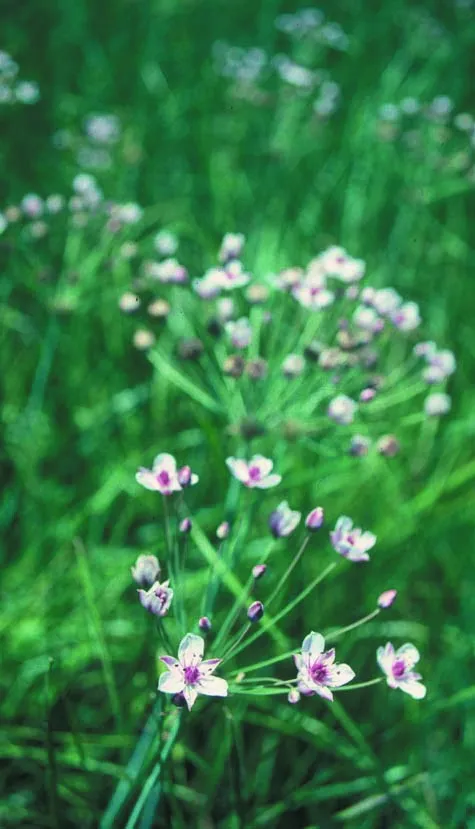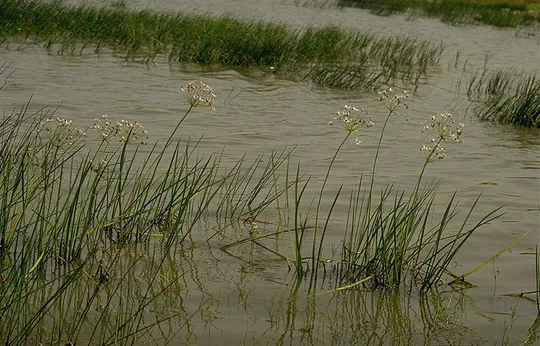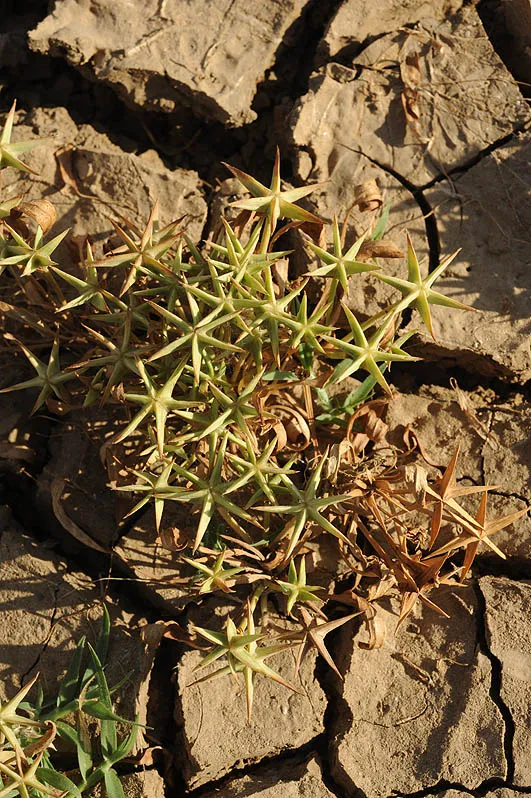Flowering Rush
Butomus umbellatus


Butomus umbellatus is cultivated in gardens. Flour from its roots is used for making bread in central Europe.
Butomus umbellatus grows in four regions in Israel: in the Sharon, in the Jezreel Valley (on a single site), in the Hula Valley and on the Golan Heights. The plant is still quite common on the Golan (about 12 sites), but in the Hula Valley it has become rare compared to the 1950s. The number of its sites in the Sharon has decreased greatly since the 20th century; in the Sharon it grows in Zeta Swamp, Ya'ar Pond (Ata), Wadi Poleg, Dora Pond, Ga’ash Pond (recently extinct) and near the Levinsky College (recently extinct). Formerly it grew in Uzer Pond in the Bet Netofa Valley, but became extinct circa 1998 due to the demolition of the pond.
Clear bodies of water: marshes, natural winter pools and slow flowing streams. Often grows plant communities that include Scirpus maritimus and Alisma lanceolatum.
The Butomus genus includes only one species common in marshes, in extensive temperate areas. B. umbellatus belongs to a monocotyledonous monotypic family with a single genus and species. This is one of the most primitive monocotyledonous families (ovary separated). It is very close to the Alisma family (three species in Israel). They are considered as the families in which the split between the monocotyledonous and the dicotyledonous plants originated.
• Many of the Butomus umbellatus sites have become extinct since the 20th century, particularly due to changes in the groundwater regime and the drying of water bodies. A prominent example is the Hula and its surrounding springs, such as the Enan Stream.
• B. umbellatus is relatively resistant to pollution and pesticides.
• The B. umbellatus sites are fragmented as its habitat is, and its populations are usually very small. A relatively large population (hundreds of plants) is found in the Ya'at Pond in the Sharon.
• The plant is protected by law.
• B. umbellatus is protected in the Zeta Swamp Reserve. Some of the other sites are included in proposed nature reserves (not declared ones) in the Ya'ar Pond, Dora Pond.
The two populations of Butomus umbellatus, one in the Sharon and the other in the Hula Valley, should be monitored. B. umbellatus populations should be reintroduced to the Hula Nature Reserve and Agamon HaHula; the head of the Enan Stream, where a large population once existed, should be restored.
Butomus umbellatus is common globally over extensive areas in Europe and Asia. The species spread and reached North America only in the last two centuries.
Butomus umbellatus is an erect water plant whose leaves and inflorescence rise out of the water. Grows only in pure water bodies. It is a northern peripheral in our region. Although the species grows in tens of sites in Israel's Mediterranean region, its habitat is suffering from severe, continuous damage. B. umbellatus is endangered in Israel due to the eradication of marshes and the impounding of natural water bodies in concrete structures. Its attractiveness increases the threat to its survival.
Current Occupancy Map
| 1000 squre meter pixel | 5000 squre meter pixel | 10000 squre meter pixel | |
|---|---|---|---|
| number of observations | 0 | 0 | 0 |
| in total pixels | 0 | 0 | 0 |
| Family | Butomaceae |
| Classification | On the endangered species list |
| Ecosystem | Mediterranean humid |
| Chorotype | Euro – Siberian (Mediterranean and Irano–Turanian |
| Conservation Site | Ya'at Pond (Sharon) and Hula Swamp (Enan) in the north |
| Rarity |
1
1
6
|
|---|---|
| Vulnerability |
0
4
4
|
| Attractiveness |
0
2
4
|
| Endemism |
0
0
4
|
| Red number |
1
4.2
10
|
| Peripherality | N |
| IUCN category | DD EW EX LC CR EN VU NT |
| Threat Definition according to the red book | Endangered |
 Based on:
Based on:






